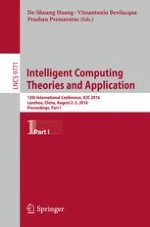2016 | OriginalPaper | Buchkapitel
Prediction of Hot Spots Based on Physicochemical Features and Relative Accessible Surface Area of Amino Acid Sequence
verfasst von : ShanShan Hu, Peng Chen, Jun Zhang, Bing Wang
Erschienen in: Intelligent Computing Theories and Application
Aktivieren Sie unsere intelligente Suche, um passende Fachinhalte oder Patente zu finden.
Wählen Sie Textabschnitte aus um mit Künstlicher Intelligenz passenden Patente zu finden. powered by
Markieren Sie Textabschnitte, um KI-gestützt weitere passende Inhalte zu finden. powered by
